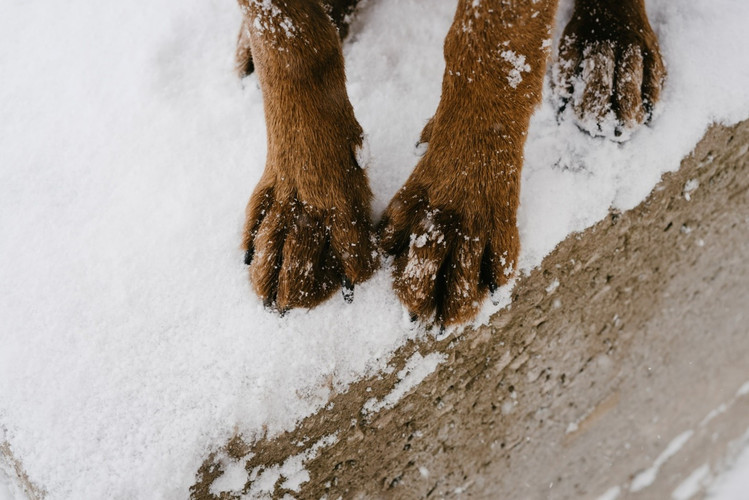How to Keep Your Dogs Paws Healthy in the Winter Months
For dog owners, snow covering the grounds means one thing: Your pup wants to go outdoors and play. Yet, what seems fun for a few minutes quickly turns to chapped, cracked paws and increases the risk of frostbite.
As a happy medium, learn how to protect your dog's paws once winter arrives:
Cold-Weather Concerns for Your Dog's Paws
Long-haired breeds naturally handle cold, snowy conditions compared to their shorter-haired brethren. While this may mean certain dogs require more layers before going outside after a snowstorm, all are vulnerable to the following exposures:
- Chemical and rock salt deicers
- Chapped, cracked and irritated paws
- Snow, ice, salt and dirt caught between their toes
- Sharp objects below the surface of the snow
- Frostbite
- Slip and fall injuries
- Hypothermia
These factors can lead to:
- Paw injuries
- Chemical burns
- Infections and sores
- Accidentally licking and ingesting rock salt
- Potential poisoning from ingesting rock salt, as well as chemical deicers and anti-freeze
Protecting Your Dog's Paws in Winter
To protect your dog's paws from winter's specific hazards:
Use Dog Boots
These go right over your dog's paws and lower part of its legs to protect it from and provide more traction on snow and ice. The material further blocks out rock salt, as well as dirt, sand and ice crystals.

Groom Your Dog's Paws
Paws directly influence your dog's traction. Before it heads out into the snow:
- Trim back any hair to avoid tangles and trapping debris and ice.
- Trim back nails, so your dog can better grip the ground and won't slide around.
Shovel Away Snow
Avoid having your dog bound through deep and piled snow, as you never know what lies underneath.
Instead, especially if you're taking your pup outdoors briefly:
- Shovel out an area for your pet to move and relieve itself.
- Consider adding a mat or straw to protect its feet.
- If you need to melt ice, use a pet-friendly deicer.
- Avoid piling snow close to your home. Your dog may want to run through the pile but may encounter chunks of ice instead.
Watch Where You Walk
If you decide to go for a walk, keep it short and avoid areas heavily salted or that have started to melt. Dogs with shorter coats, older in age or living with a health condition should limit time outdoors.
In addition, keep your walks primarily on your grounds, as you don't always know what's ahead on the sidewalk or in a neighborhood park.
Apply Moisturizer or Protectant
Not every pup is fond of dog boots, even when they fit well. A moisturizer or protectant ends up being the next best thing, as it creates a barrier against chemical and rock salt exposure and hydrates its paws to limit cracking and infections.
Once you return home, you'll need to wipe the protectant off your dog's paws. Otherwise, your pup will track the substance and any dirt it picked up into your home.
For a more natural solution, consider Eye Envy® On the Paw Therapy Balm, formulated with sweet almond oil, kukui nut oil, beeswax and other natural ingredients to moisturize your pet's paw pads, protect against dryness, chapped skin and windburn and heal any cracks that have started to form.
Keep Your Pup Hydrated
Hydration lessens your dog's risks for experiencing dry, cracked paws during the winter months. Keep its bowl full at home, and bring along water for longer walks that take you away from the yard.
Clean Your Dog's Paws Once You Return Home
Even with the most careful approach, your dog likely walked through or near deicing solution and picked up dirt and ice during its trek outdoors. Once you return home:
- Wipe your dog's paws with a towel to remove the protectant applied and any deicing solution.
- Wash your pup's paws: Dip them into a bowl or tub of warm water before you towel-dry its paws again.
- Check between its toes, including for any debris and ice that could be dislodged, and for redness, cracking or sores that may have started to develop.
- If necessary, reapply a moisturizing, healing balm to soothe any cracks or sores.

